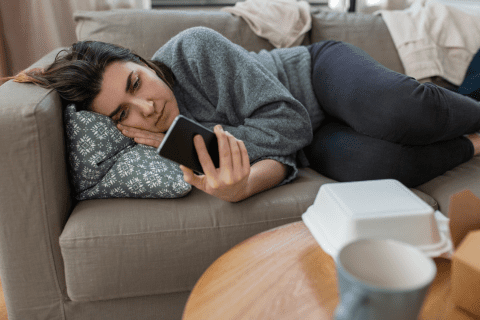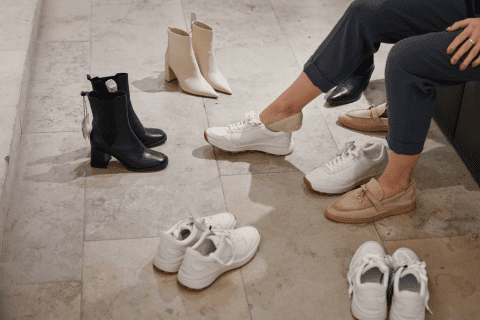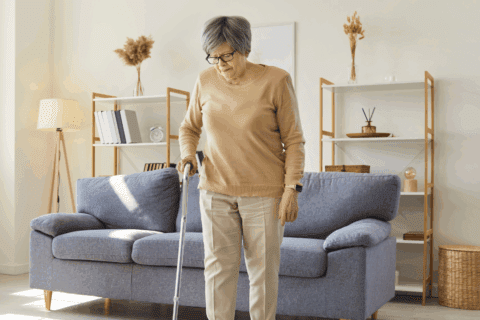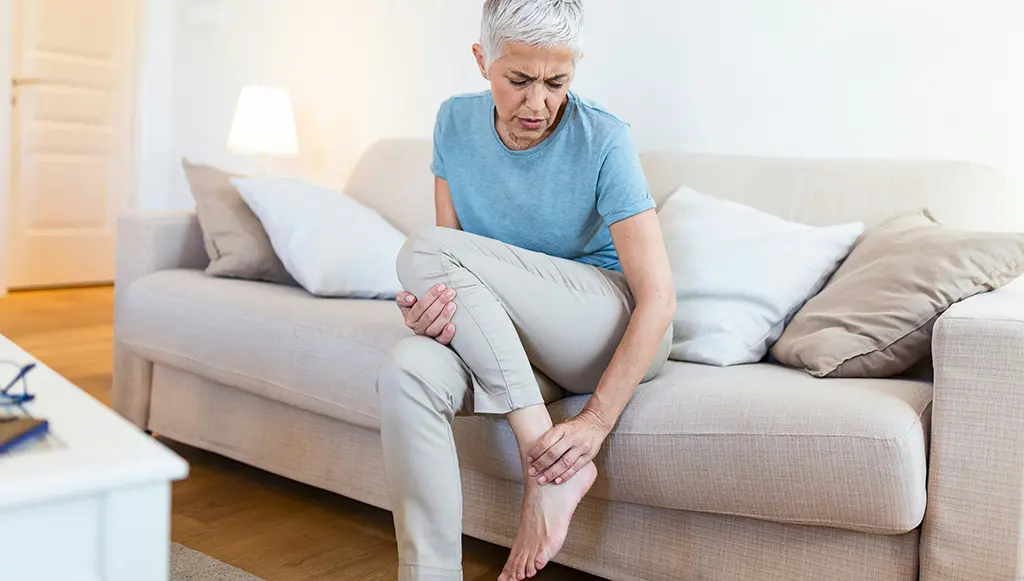 Living with arthritis can increase your risk of falling due to joint pain, stiffness, muscle weakness, fatigue, and reduced mobility. Falls can lead to injuries, hospitalisation, loss of confidence, and greater dependence on others. Fortunately, many falls are preventable—and the first place to start is your own home.
Living with arthritis can increase your risk of falling due to joint pain, stiffness, muscle weakness, fatigue, and reduced mobility. Falls can lead to injuries, hospitalisation, loss of confidence, and greater dependence on others. Fortunately, many falls are preventable—and the first place to start is your own home.
A safe, supportive home environment can make a big difference in maintaining independence and preventing accidents. This article outlines practical steps you can take to reduce fall risks at home when living with arthritis.
Why People with Arthritis Are at Greater Risk of Falling
Falls can occur for many reasons, but people with arthritis face some unique challenges:
- Joint instability due to pain, swelling, or deformities
- Muscle weakness from inactivity or disuse
- Fatigue that affects balance and reaction time
- Reduced range of motion or coordination
- Side effects from medications (e.g. dizziness, light-headedness)
- Decreased confidence in movement
The more risk factors you have, the greater your chances of falling. A proactive approach to home safety can help you move with greater confidence and security.
Key Principles of Home Fall Prevention
Fall prevention in the home involves four key strategies:
- Removing trip hazards
- Improving lighting
- Adding support aids
- Adapting everyday tasks
These changes don’t have to be expensive or overwhelming. Start with the most used areas of your home—such as your bedroom, bathroom, and kitchen—and work outward from there.
Room-by-Room Safety Tips
1. Entryways and Hallways
- Keep pathways clear of shoes, bags, cords, or clutter.
- Use nonslip mats near the front door.
- Install sensor or motion-activated lighting to improve visibility.
- Ensure flooring is level and free of loose tiles or uneven thresholds.
2. Living Room
- Avoid low or overly soft seating. Use firm chairs with armrests for easier standing.
- Keep walkways clear – move coffee tables or rugs that obstruct paths.
- Secure rugs with non-slip backing or double-sided tape.
- Arrange frequently used items (remote, phone, glasses) within easy reach.
3. Kitchen
- Store commonly used items between waist and shoulder height.
- Use grip-friendly utensils and tools to reduce joint strain.
- Place non-slip mats in front of the sink or stove.
- Consider stools or perching chairs for food preparation if standing is difficult.
4. Bedroom
- Use a bed height that allows your feet to touch the floor when sitting on the edge.
- Install bedside lighting or nightlights to reduce nighttime falls.
- Keep slippers or shoes by the bed that have non-slip soles and good support.
- Avoid storing clutter underfoot—opt for tidy storage solutions.
5. Bathroom
Bathrooms are high-risk areas due to water, slippery floors, and tight spaces.
- Install grab rails near the toilet, bath, and shower.
- Use a non-slip mat or decals in the shower or bath.
- Consider a shower chair or bath board for seated washing.
- Use a raised toilet seat if bending is difficult.
- Store toiletries within easy reach—avoid overstretching.
6. Stairs
- Ensure handrails are present and sturdy on both sides of the staircase.
- Keep steps well-lit with bright, even lighting.
- Mark the edge of each step with contrasting tape if vision is reduced.
- Keep stairs free of objects, pets, and loose rugs.
General Tips for Fall Prevention at Home
1. Improve Lighting Throughout the Home
- Use bright, consistent lighting in all rooms.
- Add nightlights in the bathroom, hallway, and bedroom.
- Open curtains during the day to let in natural light.
2. Use Assistive Equipment
- Walking aids (canes, walkers) provide extra balance and support.
- Reachers or grabbers help you avoid bending or stretching for objects.
- Furniture risers or adjustable-height chairs can reduce effort in sitting or standing.
- Speak to an occupational therapist for help choosing and fitting assistive devices.
3. Wear Safe Footwear Indoors and Out
- Choose shoes that are:
- Flat or low-heeled
- Slip-resistant
- Secure (not loose or backless)
- Cushioned and supportive
- Avoid walking barefoot or in socks on smooth floors.
4. Keep Emergency Numbers Accessible
- Post a list of emergency contacts near your phone or bedside.
- Consider using a medical alert device or smart watch if you live alone.
When to Get a Home Safety Assessment
If you’re unsure where to begin or have recently experienced a fall, it may be time for a professional home safety assessment. A physiotherapist or occupational therapist can:
- Identify high-risk areas in your home
- Recommend personalised safety improvements
- Prescribe assistive aids or modifications
- Educate you and your family on fall prevention strategies
In Australia, this may be covered through the NDIS, My Aged Care, or other community support services. Your GP can help with referrals.
Living with arthritis doesn’t mean you have to accept falls as part of daily life. With the right adjustments, you can create a safer home environment that supports your independence and gives you the confidence to move around more freely.
Start with small changes—clearing clutter, improving lighting, and securing rugs—and build from there. Every improvement adds up to greater peace of mind, fewer risks, and a home that supports your health and mobility.
See below our Home Safety Checklist for Fall Prevention (Arthritis-Friendly)
Breanna Smith
Health Promotion Coordinator
The Arthritis Movement







